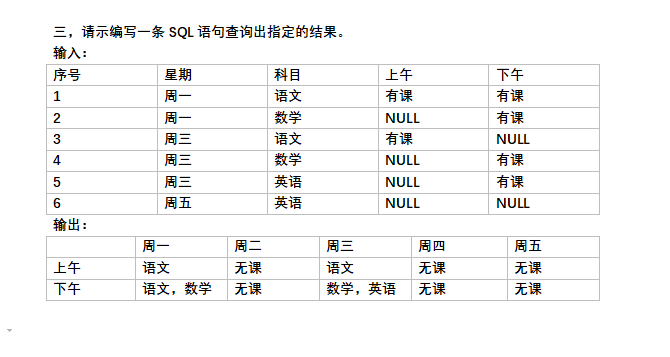可以将文章内容翻译成中文,广告屏蔽插件可能会导致该功能失效(如失效,请关闭广告屏蔽插件后再试):
问题:
I work with Series and DataFrames on the terminal a lot. The default __repr__ for a Series returns a reduced sample, with some head and tail values, but the rest missing.
Is there a builtin way to pretty-print the entire Series / DataFrame? Ideally, it would support proper alignment, perhaps borders between columns, and maybe even color-coding for the different columns.
回答1:
You can also use the option_context, with one or more options:
with pd.option_context(\'display.max_rows\', None, \'display.max_columns\', None):
print(df)
This will automatically return the options to their default values.
If you are working on jupyter-notebook, using display instead of print will use jupyter rich display logic.
回答2:
No need to hack settings. There is a simple way:
print(df.to_string())
回答3:
Sure, if this comes up a lot, make a function like this one. You can even configure it to load every time you start IPython: https://ipython.org/ipython-doc/1/config/overview.html
def print_full(x):
pd.set_option(\'display.max_rows\', len(x))
print(x)
pd.reset_option(\'display.max_rows\')
As for coloring, getting too elaborate with colors sounds counterproductive to me, but I agree something like bootstrap\'s .table-striped would be nice. You could always create an issue to suggest this feature.
回答4:
After importing pandas, as an alternative to using the context manager, set such options for displaying entire dataframes:
pd.set_option(\'display.max_columns\', None) # or 1000
pd.set_option(\'display.max_rows\', None) # or 1000
pd.set_option(\'display.max_colwidth\', -1) # or 199
For full list of useful options, see:
pd.describe_option(\'display\')
回答5:
Use the tabulate package:
pip install tabulate
And consider the following example usage:
import pandas as pd
from io import StringIO
from tabulate import tabulate
c = \"\"\"Chromosome Start End
chr1 3 6
chr1 5 7
chr1 8 9\"\"\"
df = pd.read_table(StringIO(c), sep=\"\\s+\", header=0)
print(tabulate(df, headers=\'keys\', tablefmt=\'psql\'))
+----+--------------+---------+-------+
| | Chromosome | Start | End |
|----+--------------+---------+-------|
| 0 | chr1 | 3 | 6 |
| 1 | chr1 | 5 | 7 |
| 2 | chr1 | 8 | 9 |
+----+--------------+---------+-------+
回答6:
Try this
pd.set_option(\'display.height\',1000)
pd.set_option(\'display.max_rows\',500)
pd.set_option(\'display.max_columns\',500)
pd.set_option(\'display.width\',1000)
回答7:
If you are using Ipython Notebook (Jupyter). You can use HTML
from IPython.core.display import HTML
display(HTML(df.to_html()))
回答8:
You can achieve this using below method. just pass the total no. of columns present in the DataFrame as arg to
\'display.max_columns\'
For eg :
df= DataFrame(..)
with pd.option_context(\'display.max_rows\', None, \'display.max_columns\', df.shape[1]):
print(df)
回答9:
This answer is a variation of the prior answer by lucidyan. It makes the code more readable by avoiding the use of set_option.
After importing pandas, as an alternative to using the context manager, set such options for displaying large dataframes:
def set_pandas_options() -> None:
pd.options.display.max_columns = 1000
pd.options.display.max_rows = 1000
pd.options.display.max_colwidth = 199
pd.options.display.width = None
# pd.options.display.precision = 2 # set as needed
set_pandas_options()
After this, you can use display(df) or just df if using a notebook, otherwise print(df).


